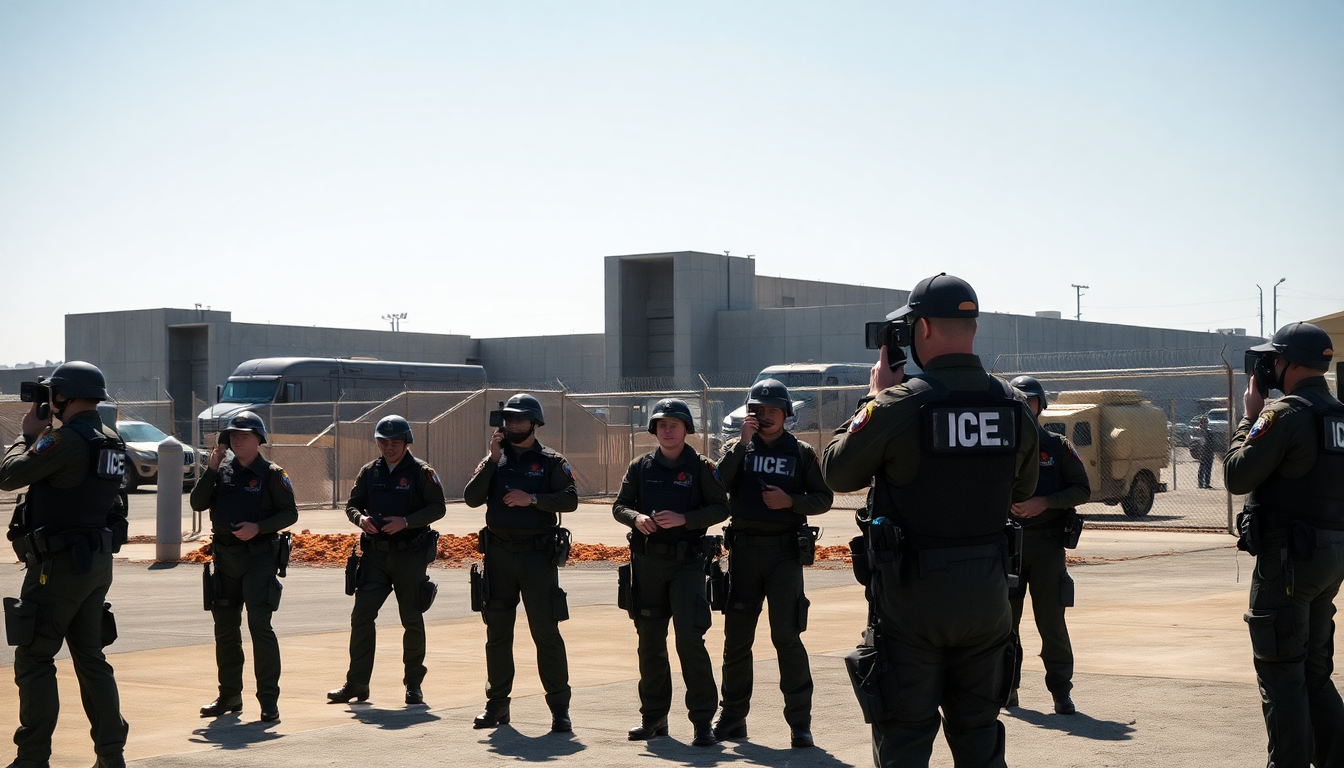Table of Contents
Recently, the U.S. Marine Corps kicked off a pilot program in collaboration with Immigration and Customs Enforcement (ICE), and it’s already sparking a lot of conversations about security at military bases. This initiative places ICE agents at three significant Marine Corps locations—Camp Pendleton in California, Marine Corps Base Quantico in Virginia, and Marine Corps Base Hawaii. The goal? To tighten security protocols, especially after some recent security breaches that have raised eyebrows. But here’s the catch: many are questioning how transparent this program really is and whether it’s truly necessary or effective.
Why is there a need for better security measures?
The decision to involve ICE agents in military base security comes amid growing worries about unauthorized access by foreign nationals. The Pentagon has made it clear that this pilot program is just one piece of a larger strategy to strengthen security at military installations around the world. By boosting visibility and coordination at crucial access points, having ICE personnel present is meant to enhance overall force protection. This move follows concerning incidents, such as a breach attempt by two Jordanian nationals at Quantico, highlighting just how urgent the need for better security measures has become.
In a recent statement, a Pentagon official emphasized that this collaborative effort with ICE is part of a global push for improved security protocols. The initiative aims to deter unauthorized access and safeguard military personnel and facilities. It’s also important to note that the military is facing a variety of security threats, from drone flights over bases to attempts by foreign nationals to breach these locations. These incidents have led to a thorough reassessment of existing security frameworks.
What about transparency and its implications?
Even with these objectives in mind, concerns about transparency remain. Abby Hall Blanco, a professor of economics and defense at the University of Tampa, has voiced skepticism regarding the reasons behind this program. She points out that the lack of information on how this initiative came to be raises questions about whether the Marine Corps can manage its security on its own. For those serving, the idea that the Marine Corps needs outside help to maintain security could be unsettling.
Moreover, the involvement of ICE could trigger mixed reactions among military personnel. While some may view it as a necessary step toward enhancing security, others might feel it suggests they aren’t capable of protecting their own installations effectively. This split perception could create challenges for the military as it strives to maintain morale and confidence among its ranks while addressing valid security concerns.
Looking ahead: What does this mean for military security?
As this pilot program progresses, we’ll start to see its long-term implications for military security. With increased scrutiny on unauthorized access and potential threats, this program could serve as a testing ground for similar initiatives at other bases. However, it’s vital to keep an eye on how this partnership evolves and whether it leads to real security improvements without compromising the autonomy of military personnel.
In summary, while the collaboration between ICE and the Marine Corps aims to tackle pressing security issues, it’s essential to find a balance between enhanced security measures and transparency, all while maintaining the integrity of the military. The success of this initiative will hinge on its ability to effectively deter threats while fostering a collaborative environment that respects the capabilities and expertise of military personnel. After all, isn’t the ultimate goal to keep our military safe and secure?


